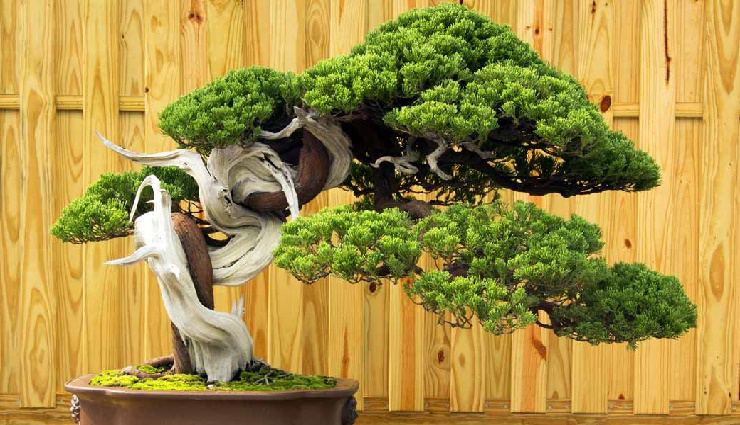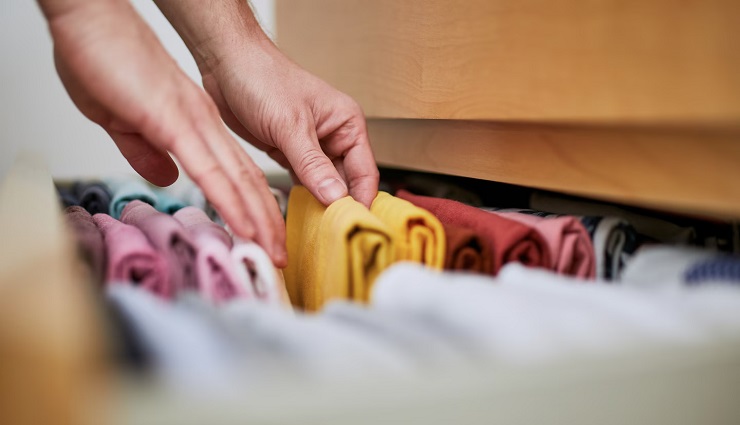Many people think bonsai is a type of plant when it is a method of planting trees. All kinds of trees can be grown to grow miniature. Bonsai cultivation is an ancient art that uses techniques such as crown and root pruning, branch tying, and root encapsulation in shallow pots to produce miniature trees. If you are interested in this old hobby, join us to introduce you to the essential points and types of bonsai that can be grown at home.
Essential tips for bonsai tree care
1. right place
Many bonsai prefer to be outdoors most of the year, as it is challenging to establish indoor natural cycles (essential for tree health). In addition, bonsai trees love sunlight, and there is not enough light for them indoors. Of course, some species, such as the jade plant, Fukien tea, and focus, can be grown indoors.
On the other hand, not all bonsai species can withstand your area’s climate. Therefore, you should consider this point when choosing a bonsai tree or flower. If you live in a hot spot, it is best to place the bonsai in a place that will be shaded during the hottest hours of the day.
2. wATERING systems
To water the bonsai tree, you should pay attention to these factors:
- type of pot;
- weather;
- seasonal factors;
- Bonsai species.
In these ways, you can determine the right time to water the plant:
- Dip your finger 5 cm into the soil. If the potting soil seems dry, it is time to water it.
- Insert a wooden skewer 2.5 cm in the middle of the pot’s soil. If it does not turn brown after 10 minutes and dirt does not stick to it, the ground does not have enough moisture, and it is time to water.
- Use a soil moisture meter. Place the moisture meter in the soil near the roots. The hygrometer displays a number that tells you whether the plant needs watering.
3. Fertilization
Regular fertilization enriches the soil of the pot. Liquid fertilizers work faster and are easy to measure, but they are washed away with each watering. Solid fertilizers spread slowly in the soil over time, but it is more difficult to control their dosage, and their high consumption causes the delicate roots of the tree to burn. We recommend that you use a mild fertilizer without urea every time you water to solve the problem of the schedule and dose of fertilizer.
To determine when to fertilize, always pay attention to the instructions on the fertilizer container because each product has different instructions. In general, there are differences in the amount and time of fertilizing different types of trees:
- Tropical and subtropical trees: Fertilize weekly during the growing season. These trees grow all year round and should be fed monthly from autumn to spring.
- Deciduous trees: Fertilize weekly during the growing season. Stop fertilizing when the leaves drop because the tree has gone dormant.
- Conifers: Fertilize weekly during the growing season. During winter, reduce fertilization to 1 or 2 times a month, as conifers do not go completely dormant and continue to use nutrients.
4. suitable soil
Suitable soil causes sufficient drainage, oxygen penetration, water, and nutrient conservation. The ground suitable for a bonsai tree contains these elements:
- Compost: Provides essential nutrients to the tree and helps conserve water.
- Red Lava Rock Chips: Prevents fertilizer build-up and soil compaction.
- Pumice: causes better aeration, maintains moisture, and supports the roots.
- Akadama: improves soil drainage and is helpful for root strengthening.
Almost all types of bonsai grow best in particular soil, usually called bonsai soil. Bonsai soil combines complex Japanese academia (a clay-like mineral), pumice, and black lava, adding some horticultural additives.
5. Change the pot
Changing the pot periodically prevents root binding, increases soil nutrients, and strengthens tree roots. It is better to change the pool in the spring. In the spring, the tree prepares for growth and transfers stored energy from the sources to the newly sprouting leaves.
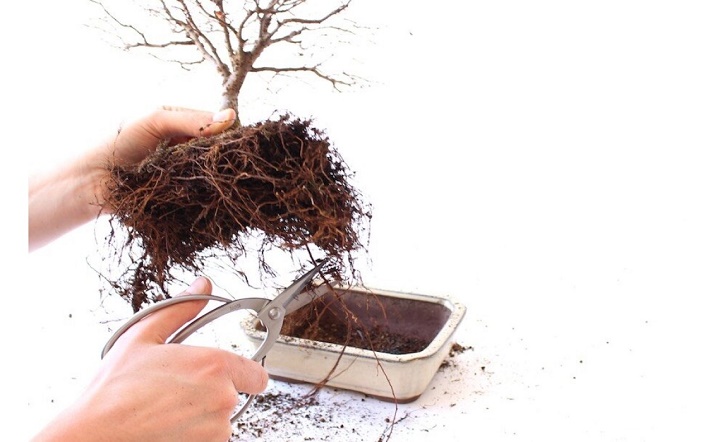
Seeing roots sticking out of the drainage holes or crawling on the soil means it’s time to change the pot. Never change the pool in winter because the tree has gone to sleep and stored most of its energy in its roots.
Necessary tools for growing bonsai
To grow bonsai, you need a complete toolbox, including scissors, pliers, garden shears, and other tools necessary to shape trees and make precise cuts. If you are a beginner, you can start with regular pruning shears and wire cutters.
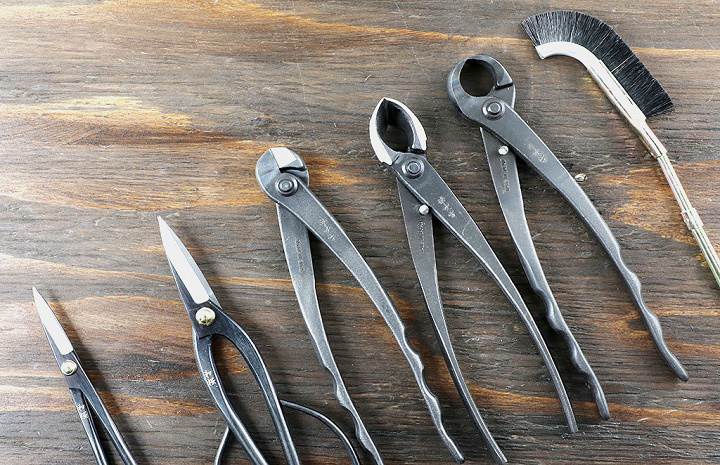
Pruning and wiring the branches make the tree take the desired shape during growth. By manipulating the tree, the bonsai master can create surface roots or dry and dead branches on the tree or make a bonsai forest.
Suitable bonsai species for beginners
To begin with, it is better to work with species that are easier to grow. The most common bonsai tree species for beginners are:
- Juniper: Tolerates heavy pruning and is excellent for learning wiring techniques.
- Ficus: It is one of the most common types of apartment bonsai. Ficus is the best option for those not adhering to regular watering.
- Red Maple Bonsai: An affordable Japanese bonsai that tolerates beginner pruning mistakes but must be watered regularly.
- Chinese Elm: Great for learning pruning techniques and grows indoors or outdoors.
16 common types of bonsai trees
Almost all trees or perennial shrubs with woody stems and branches can be made into bonsai trees, but some species are more suitable. Some bonsai tree species are more popular for aesthetic reasons (such as small leaves or twisted and knotted trunks). At the same time, others are popular because they are resistant and do not require much care and maintenance.
1. Mountain cypress or juniper
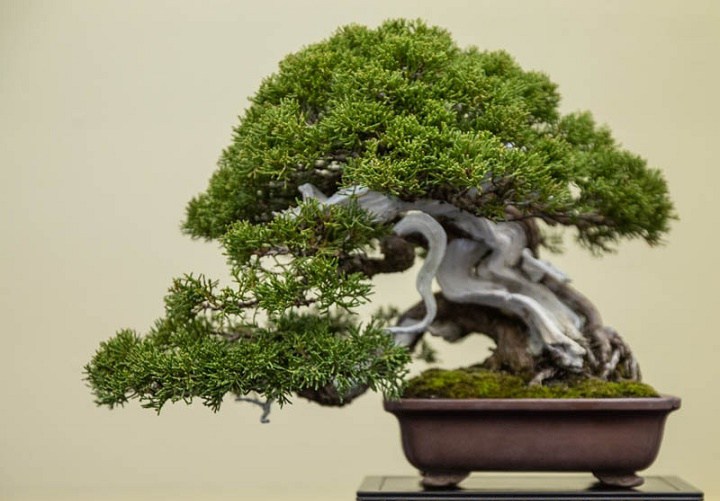
Mountain cypress is a large genus with more than 50 coniferous evergreen trees and shrubs, all of which can be made into bonsai. The two main reasons for the popularity of the mountain cypress are its small leaves (they match the miniature bonsai appearance) and the resistance of this tree. (Can withstand severe pruning.)
Cypress bonsai trees do not grow well indoors because they need a bright and sunny environment. It would be best to wait for the soil to dry before watering.
2. Pine
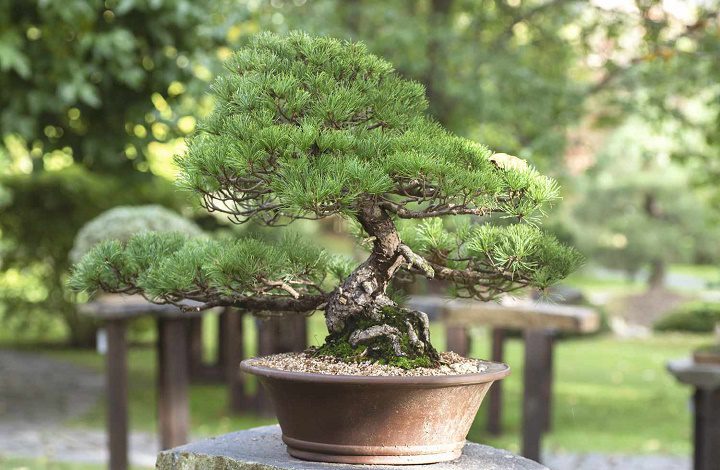
Pine trees are resistant and can be shaped into almost all known bonsai models. Species more suitable for bonsai include Japanese black pine, mountain pine, Scots pine, and Japanese white pine. The pine tree needs full sun (at least 6 hours of direct sunlight per day) and should be watered when the soil in the pot looks dry.
3. Japanese maple bonsai
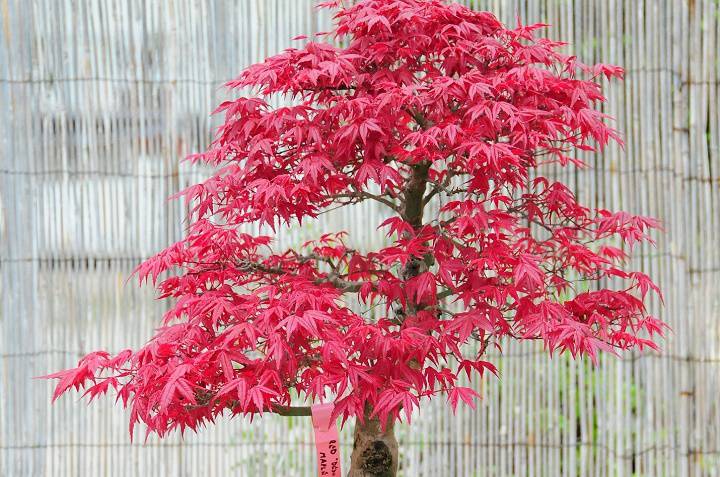
Japanese maples are deciduous trees with red or green leaves that turn bright red, orange, or yellow in the fall. Usually, the bark of a young Japanese maple tree is green or reddish and turns gray or grayish brown as the tree ages.
Japanese maples need a lot of water, especially during the growing season. These trees may need daily watering and even several times a day in hot weather. These trees need partial sun (4 to 5 hours of sunlight daily, preferably in the morning).
4. Japanese Flowering Cherry
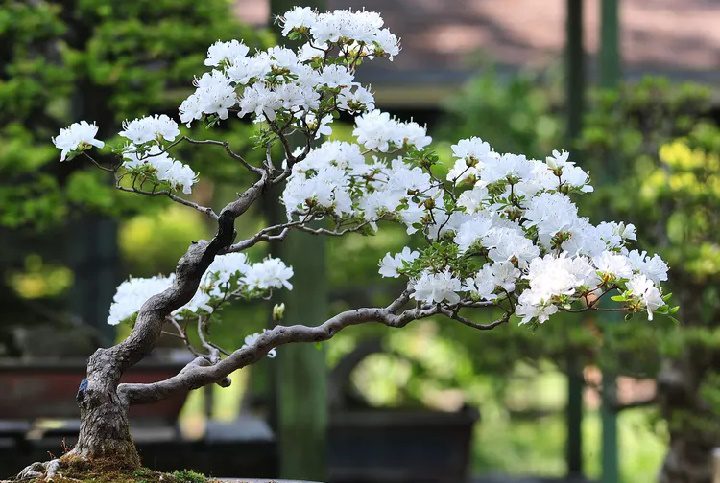
In addition to the attractiveness of the branches, these deciduous ornamental trees have flexible trunk that is easily formed. Cherry bonsai trees can be grown at home, but they may suffer from a lack of light. This tree grows the most outdoors in the summer months. Japanese flowering cherry needs full sun, and you should always keep the potting soil moist.
5. Cedar tree
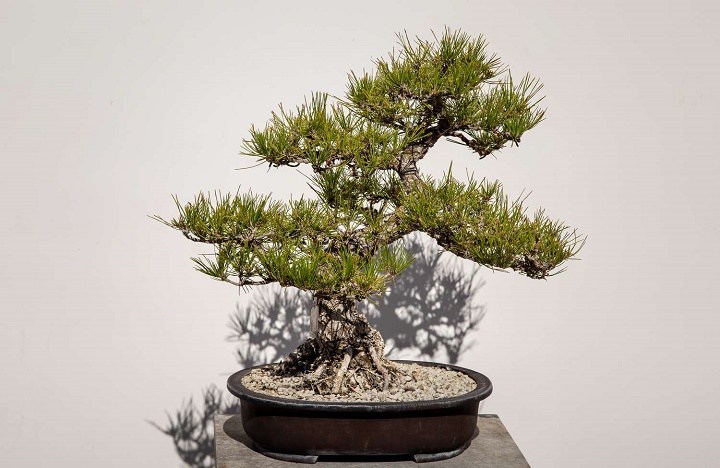
The cedar tree’s rough bark makes it a popular choice for bonsai. Cypress trees are coniferous and evergreen trees with clusters of short needle-like leaves. They can be made into incredible and stunning shapes. But these trees are not suitable for beginners. Cedar bonsai trees require specialized care and are ideal for experienced growers. The cedar tree needs direct sunlight, and between two waterings, the soil in the pot should dry to some extent.
6. Ginseng Ficus
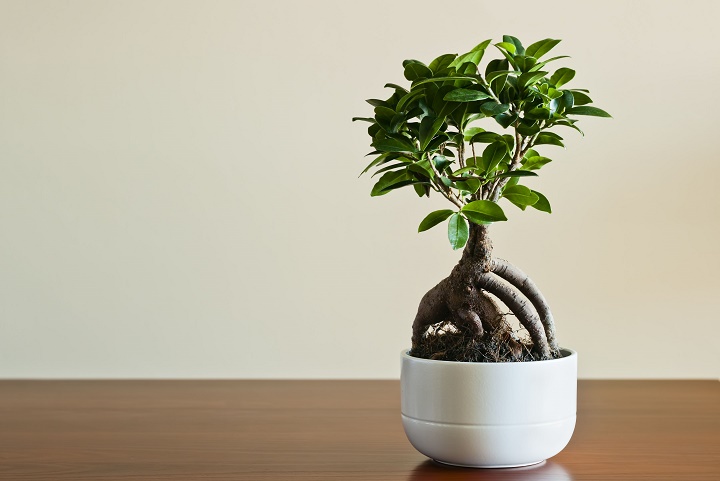
It is a hardy tropical bonsai species that is suitable for beginners. These broadleaf evergreen trees are known for their unique aerial roots and dark green leaves. Ficus ginseng bonsai does not require as much care or light as other popular bonsai species. This plant grows well indoors because it comes from warm climates and environments with indirect light. You must keep the potting soil moist.
7. Ficus Benjamin or Weeping Fig
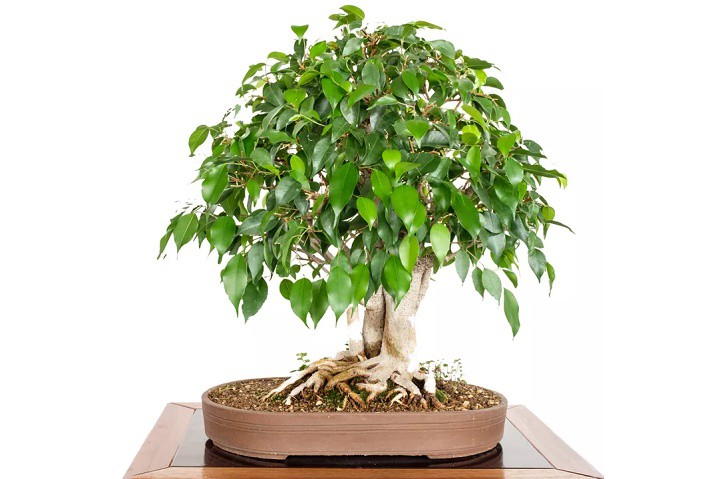
The deciduous fig’s beautiful, umbrella-like canopy makes it a popular choice for bonsai. Its twisted surface roots are another attractive feature that enhances the beauty of bonsai. Ficus Benjamin is a hardy and resistant tree that adapts well to indoor conditions. This tree needs partial sun and frequent watering.
8. Dwarf Jade
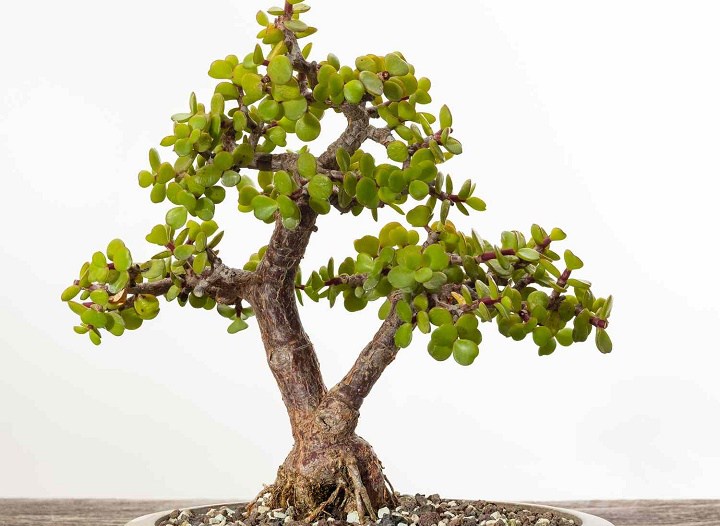
The dwarf jade plant is a semi-evergreen shrub with soft wood that is great for beginners. Dwarf Jade is very similar to Crassula ovata but has smaller leaves, making it a better choice for bonsai.
Dwarf jade bonsai grows well indoors but needs direct sunlight for most of the day. This plant also grows well outdoors but cannot tolerate freezing weather. Dwarf jade needs little watering.
9. Pomegranate Bonsai
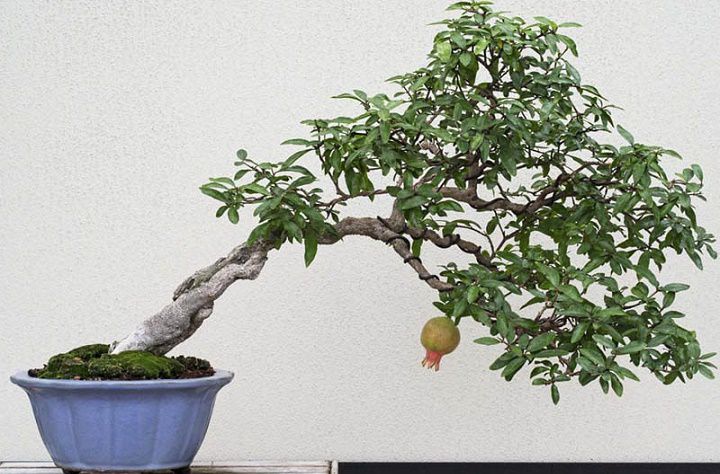
The pomegranate tree’s thick, knotty bark and flowers make it an excellent choice for bonsai. This tree should be protected from freezing temperatures but can be outdoors year-round in warm climates. Pomegranate bonsai needs direct sunlight and regular watering.
10. Dwarf Boxwood Bonsai
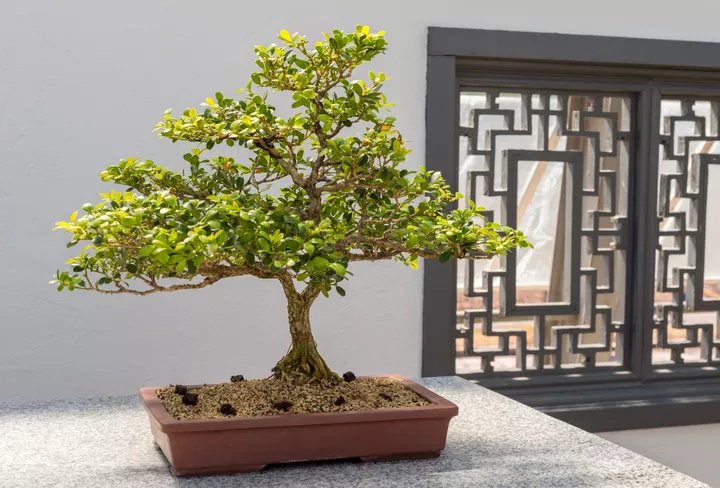
Dwarf boxwood is a popular shrub and a good choice for bonsai because it responds well to pruning. This plant needs full sun to partial shade (3 hours of sunlight daily, preferably in the morning) and is somewhat drought resistant. The soil of the pot should dry between two waterings.
11. Azalea
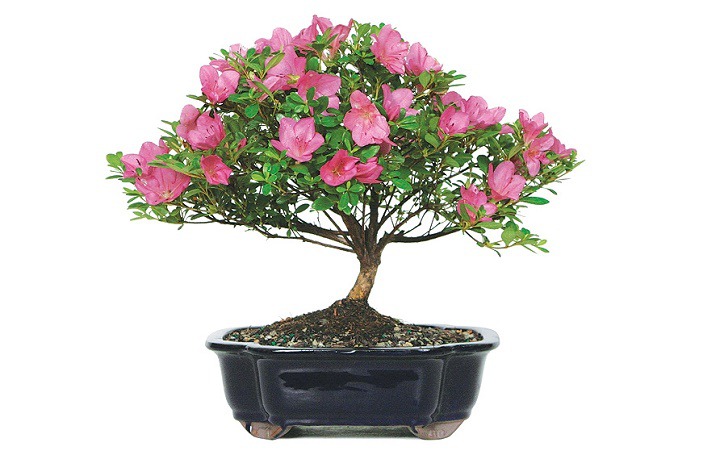
It is a flowering shrub whose dwarf species eventually grow to about 90 cm. A certain azalea called Satsuki or Southern Indian Azalea is excellent for bonsai, but this flowering plant is suitable outdoors. Azalea needs full sun to partial shade and frequent watering. Its flowers are white, pink, red, and orange.
12. Chinese elm
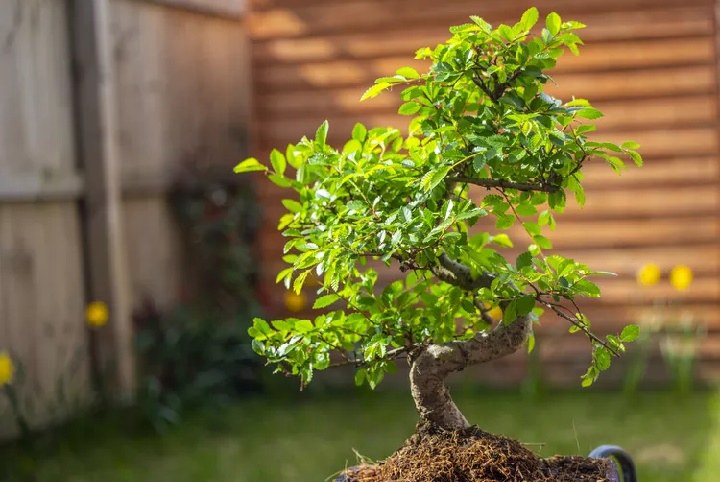
It is a popular choice for beginners because it is easy to grow indoors or outdoors but requires much pruning. The Chinese elm has a round shape, and its multi-colored and distinctive bark with shades of brown, gray, green, and orange attracts the viewer’s attention. Chinese elm needs full sun and less frequent and deeper watering. (It is resistant to drought.)
13. European Beech
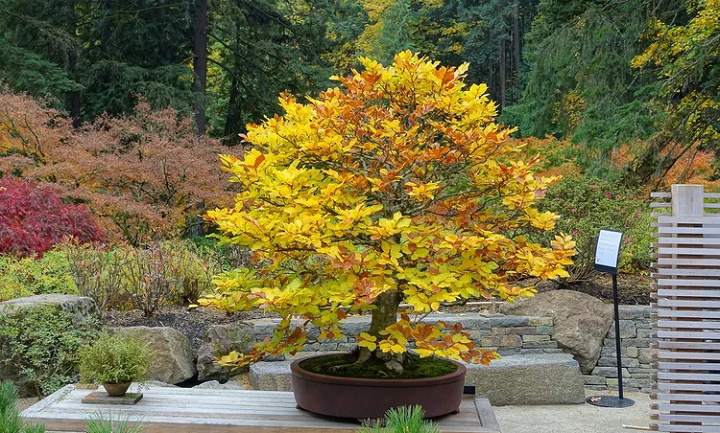
European Beech is excellent for bonsai because of its smooth gray bark and broad but small leaves. A tricolor beech tree with variegated leaves that can be shades of green, pink, and white makes a dramatic bonsai. Other beech trees include American Beech, with large and thin leaves, and Japanese white Beech, which is more suitable for bonsai due to its smaller and thicker leaves. The beech tree needs full sun to partial shade and should be watered when the potting soil is dry.
14. Abies pine
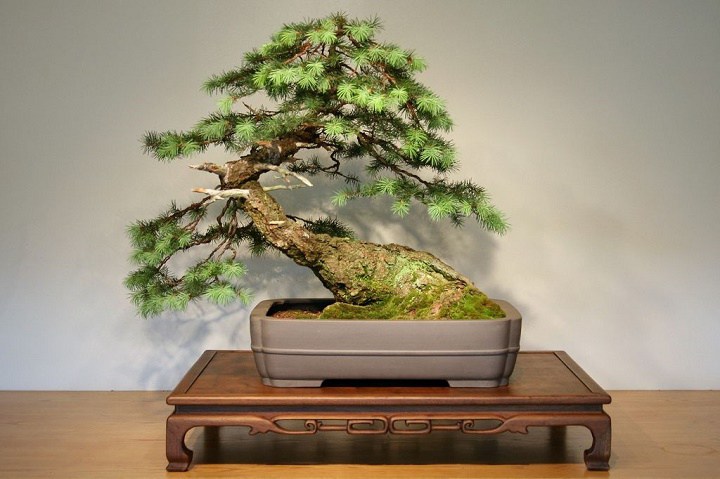
Nerad trees are from the pine family. These trees are not always suitable for pot planting and must be adapted. Douglas fir is one of the famous trees of this genus for growing bonsai. The foliage of this tree is dense, and its branches are very suitable for bonsai. Younger Douglas fir branches are easier to shape because they are more flexible than older ones.
Nerad pine needs full sun to partial shade. This tree does not like dryness or humidity. It should be watered when the soil is almost dry.
15. White Oak
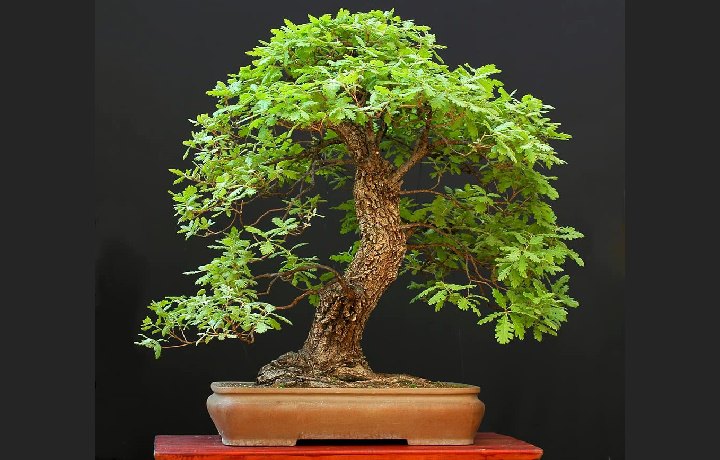
Even white oak bonsai can have a gnarled and twisted trunk and a long life. Growing this tree is not easy for beginners. Other oak trees, such as the English oak, are better bonsai trees. White oak needs full sun and deep watering infrequently (only when the soil is dry).
16. Flowering Crabapple
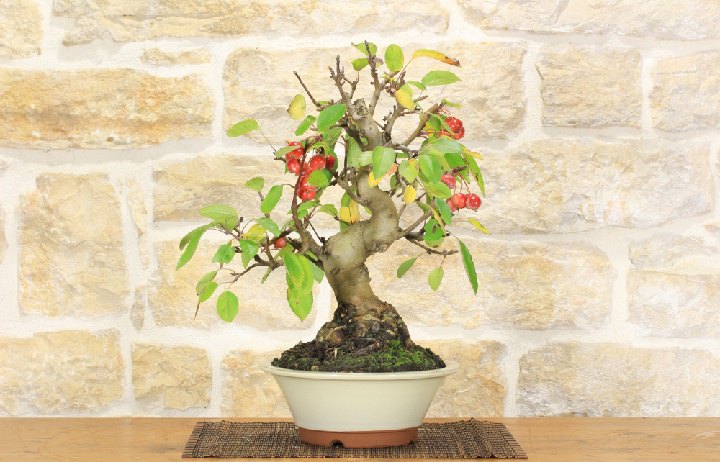
Most wild apple species can be grown into fragrant flowering and fruiting bonsai. These trees bloom in spring and bear fruit in autumn. Flowering wild apple needs full sun (though not in extreme heat). To keep the soil moist, you should also water it frequently, but not so much that it becomes muddy.
you say
By reading this article, you probably realized that maintaining a bonsai tree is not difficult. It’s just a little more complicated than keeping regular houseplants. If you have any experience or opinion about growing bonsai, we would be happy if you share it with us.
